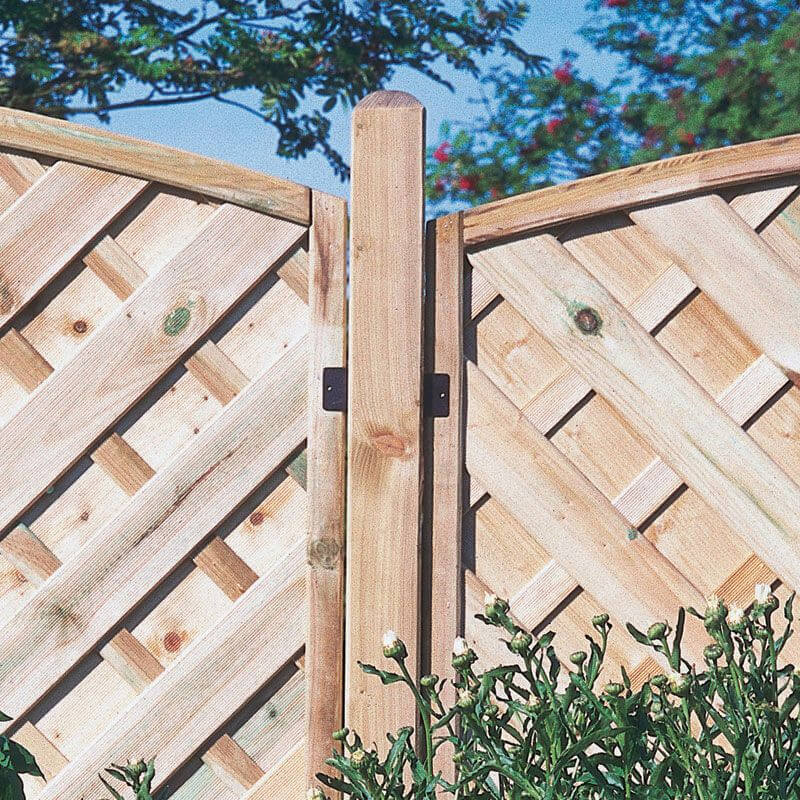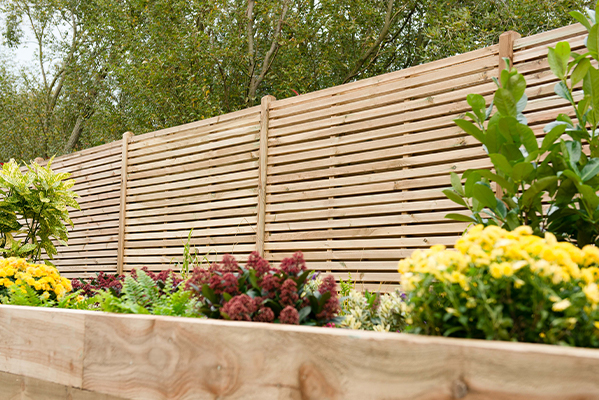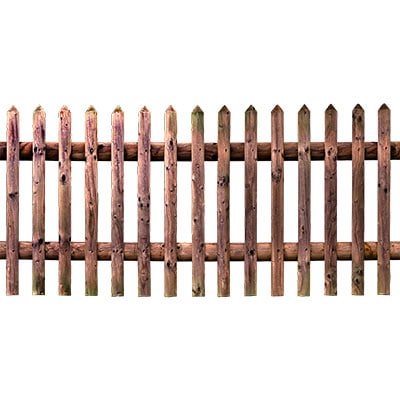
Have you been looking for a guide about "How to erect a fence"? Well, if so, look no further. This guide from fencing experts, Buy Fencing Direct explains everything you need to know including a step-by-step how to erect fencing guide as well as consideration of related factors. Learn about tools and materials, fencing panel styles, fencing post considerations, legal and planning permission aspects, neighbourhood etiquette, how to erect a fence on a slope and much more!
Editor’s Note [26.04.2024]:
Our article entitled Learn how to erect a fence was originally published on February 28, 2014. Today's upgrade has been extensive with modifications being made throughout the new article. Entire new sections have been added including why erecting a fence matters, how to erect a fence on a slope, related articles, legal considerations, and neighbourhood etiquette, as well as a conclusion. There has also been a significant expansion of both the tools and materials and fence posts sections.
Introduction: Why erecting a fence matters
We focus in this article mainly on how to erect a fence, but will answer first, why do you need one in the first place? In most cases, there is no legal reason to install fencing, it is a matter of choice. Installing panels of fencing is normally completed to either keep items in, or keep things out:
- Aesthetics - fencing can add a "WOW factor" and be a personal statement of your preferred garden decor style with numerous contemporary and traditional fencing styles being available
- Keeping inside - a fence is ideal for keeping children and pets inside as well as belongings (especially garden valuables) being contained within a defined garden boundary
- Keeping intruders out - fencing is a privacy and security barrier (e.g. to stop prying eyes watching your children, or when you are sunbathing), that keeps out burglars and unwanted guests (e.g. stray dogs, or salespeople)
- Legal obligation - there are a few cases where there is a legal obligation to put up a fence (or other barriers such as a hedge). These include properties located next to a train track, if the property deeds state it is needed, and in rural areas to contain livestock and to demarcate agricultural land boundaries
- Weather and noise protection - rather than let storms rip through your garden, fencing acts as a natural barrier against wind and helps to protect your garden (including buildings such as sheds and summerhouses, as well as plants and furniture), as well as keep your belongings inside. Fencing also brings an often underestimated level of noise reduction, especially near busy roads
Tools and materials needed
The following tools and materials are needed to erect a fence. These are everything you need including fence post installation and attaching panels:
- Claw hammer
- Concrete mix
- Drill complete with bits set
- Fence panels
- Fence posts
- Gravel (for drainage)
- Gravel boards
- Hammer
- Paint or stain
- Post caps or finials (optional, based on style preference)
- Safety equipment (including ear protection, gloves, and goggles)
- Saw (various such as a hand saw or a circular saw)
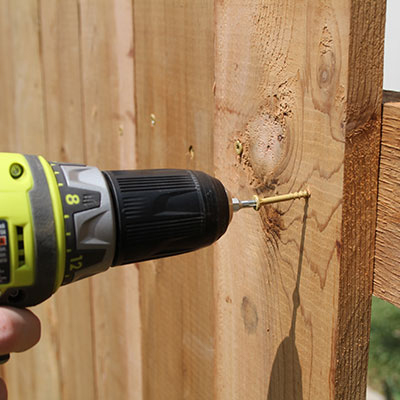

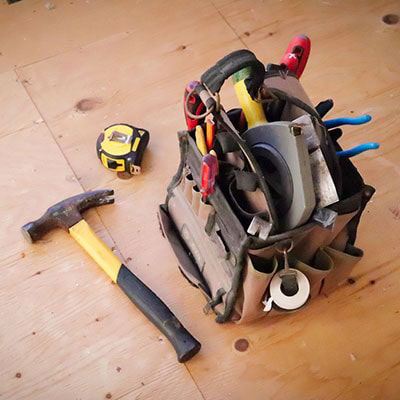

- Screwdrivers
- Screws or nails
- Sealant gun
- Shovel (or even better a post hole digger)
- Sledgehammer
- Spirit level (sometimes just called a “level”)
- String line and pegs
- Tape measure
- Varnish brush
- Wheelbarrow
- Wood preservative
Fence panels
Choose your wooden fence panels; think carefully and practically about your choice of panel, do you need privacy? Do you need to spice the garden up with decorative panes? Or do you need to simplest, cheapest fence panel? It will also depend on how long you’d like them to last, for instance, dip treated panels have a guarantee of 10 years and pressure treated fence panels have a guarantee of up to 15 years against rotting and fungal decay.
Understanding different types of fencing
There are many different types of fencing available at Buy Fencing Direct. Just three examples of popular styles to choose from are:
- Close board fencing offers you great privacy, due to being made up of vertical overlapping timber boards which provide your privacy and a strong, solid panel. These are known as the strongest and heaviest kind.
- Overlap fencing is made up of overlapping panels styled horizontally and these fence panels and commonly known as the cheaper option, although it will still maintain the privacy of your garden/area.
- Trellis panels are a good way of holding onto security whilst adding decoration to the garden, especially when you are using a solid panel with the trellis fence topper.
Fence posts
Another important part of any fencing installation is the fencing posts. These can be considered as the spine of the fencing as they provide structural support and alignment to keep the fence in place when storms and wind arrive.
Wooden fence posts vs concrete fence posts
When choosing how to erect fencing an important consideration is deciding between wooden fencing posts or concrete fence posts. Both have distinct pros and cons, which are discussed below in our pros and cons table:
|
Wooden fence posts |
VS |
Concrete fence posts |
|
Natural look |
Aesthetic appeal |
Modern look |
|
Easily modified |
Customisation |
Harder to modify |
|
Variable |
Durability |
Longer lasting |
|
Biodegradable |
Environmental impact |
Less eco-friendly |
|
Easier to handle |
Installation ease |
Heavier, harder |
|
Less expensive |
Initial cost |
More expensive |
|
Needs more |
Maintenance |
Less maintenance |
|
Prone |
Resistance to insects |
Resistant |
|
Lower |
Rot resistance |
High |
|
Less strong |
Strength |
Strong |
|
Higher risk |
Susceptibility to fire |
Fire resistant |
|
Less resistant |
Weather resistance |
Highly resistant |
One-third rule
The one-third rule is well known in fencing and means that at least one-third of the height of the visible fence post is buried below ground level. For example, if 6’ of the fence post is visible, 2’ needs to be underground and an 8’ fence post would need to be bought.
Whatever posts you choose, a safe rule is you need to have them 2ft higher than your panels. (This will only apply if you are sinking them into concrete below ground). Otherwise, you will need to use post spikes which can count for the sinking space, you will use the same sized posts and panels for this method.
Planning your fence installation
First of all, it is recommended that you clear the area you wish to install your fencing; it’s also recommended that you re-treat your panels before installation, even if you have a treatment with a guarantee just to ensure you are getting the full potential from your garden fence. Then it’s a good idea to mark out your fencing area with string line and pegs to follow when digging holes for your posts, ensuring your measurements and alignment are correct.
So, we are ready!
Step-by-step guide: How to erect fencing
Read our step-by-step guide below to learn how to erect a fence:
Step 1
Now that you have marked out your area, you are ready to dig the holes to sink the panels into or insert the spikes.
Step 2
Once the 2ft holes are ready, you are able to place your posts in, supporting them with other posts at an angle. If you are using spikes, you simply rest the post on the spike.
Step 3
Pour the concrete mix down into the hole surrounding the post nicely. Using a spirit level, check the post is upright, before this sets.
Step 4
Then, when the concrete has set around your posts, you will need to drill pilot holes and fix the panels to the posts with U shaped brackets.
Step 5
Gravel board time, you are then going to attach the gravel board to the bottom of the panel, this prevents the panel from rotting and the pressure treated board instead.
Finish
You then have yourself a row of fence panels, sunken or on spikes, in a finely measured line.
How to erect a fence on a slope
Most fencing installation is on level land, but slopes are more challenging. If you are facing how to erect a fence on a slope, factors to consider include:
- Drainage and erosion - whether sloping up or down consider drainage and water run-off carefully, this helps to avoid fence post rot (for wooden fence posts) in the medium-long term
- Increased time and complexity - sloped fencing takes longer to install and is more complex
- Panel cutting and angling – you might need to cut fence panels to avoid them hitting the ground. This could involve awkward cutting and might impact the final look and feel
- Post alignment - posts need to be aligned carefully to match the slope gradient
- Post depth - the post depth may need to be reconsidered considering the slope
- Privacy considerations - sloped gardens can change privacy aspects:
- Raised levels - where your garden is higher than your neighbours opt for lower fencing, perhaps 3' or 4' high above the ground, which should be adequate
- Lower levels - where your garden is lower than your neighbours opt for higher fencing, e.g. 5' or 6' high, this aids with privacy and security
- Railing and supports - sometimes additional railings and other supports might become necessary. This helps to maintain structural integrity with challenging gradients
Legal considerations and neighbourhood etiquette
Many areas of gardening (e.g. mowing, planting, vegetable growing, etc.) do not involve the law or neighbours but fencing needs more careful consideration.
The law and local regulations
Various UK Government Acts of parliament impact and govern garden fencing. Briefly, the main rules to consider are:
- Back gardens - a maximum height for most fence panels allowed is two metres high
- Front gardens - a maximum height of one metre, where the fence is next to a highway and two metres otherwise
- Planning permission - planning permission from your Local Authority is needed for fence heights above numbers 1) and 2) above
- Height measurement - the height is measured from the ground level and above, any buried fence post does not count in the measurement
- Conservation areas - special rules apply in conservation areas, check with your local planning authority for these rules
The above is just a precis of UK law relating to fencing, for a comprehensive article read our blog post - Maximum fence height in the UK & regulations for front gardens.
Neighbour etiquette concerning fencing
Always consider the impact of fence height on neighbours and inform them of significant changes. This is not only etiquette, but it also heads off potential legal consequences. It is true neighbours do not have the power of your local planning authority, but it is important to keep in good harmony and relations with them.
Always balance your own need for privacy and security with your neighbour’s enjoyment of their garden. If you are intending to change fencing, communicate openly with them about it. Try and consider your neighbour’s perspective, particularly where properties are sloped, and your 6' fence could appear imposing and maybe only a 4' high fence is required. Be careful to check the deeds, it may even be that it is your neighbour’s responsibility to maintain fencing.
Related articles
For a more detailed process than we can provide here, we recommend reading the following articles from the Buy Fencing Direct blog:
For more information on erecting a fence be sure to watch our useful video “How to install a fence” below:
Conclusion: enjoying your new fence
Well, we have now finished our “How to erect fencing” article. We have discussed that fencing is important for the containment and safety of children, pets, as well as garden valuables. Aesthetically there are a range of fencing options, including traditional (e.g. closeboard, overlap, and picket) as well as contemporary (e.g. decorative, hit & miss, slatted or trellis). As well as being aesthetically pleasing fencing is also an important privacy and security barrier, which also provides weather and noise protection.
Our step-by-step guide to installation of fencing panels and posts should prove highly valuable and we strongly suggest you carefully digest each part of the process.
Before you install new fencing consider the legal implications we have highlighted above and the possible impact on your neighbours. Consider whether you buy wooden fence posts or concrete fence posts carefully, our comparison table of the two should prove invaluable. Ensure one-third of the post is below the ground. Before you approach how to erect a fence on a slope, read our factors to consider above.
Contact and advice
For direct guidance about how to erect a fence, our team are also available and has a wealth of knowledge of our fencing panel selection. The Buy Fencing Direct team look forward to your contact on all fencing-related matters including how to erect fencing. Contact methods available are:
- Phone calls - 0333 003 0515
- E-mails – these can be sent through our contact form
- Text chat - our live chat app allows you to message us through text chat in real-time





